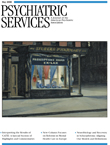Between 2011, when the first baby boomers turn 65, and 2030, when the entire cohort reaches that age, the number of persons over age 65 will increase from 37 million to more than 70 million. By 2030 this age group will account for nearly 20% of the population. Although this population surge has been foreseen for decades, the education and training of the health care workforce with respect to the needs of older Americans remain "woefully inadequate," according to a new report from the Institute of Medicine (IOM). The report calls for immediate action and warns that ensuring adequate workforce capacity—in both size and ability—will require many years of effort.
The IOM report notes that although Americans over age 65 currently make up 12% of the population, they account for 26% of all physician office visits, 35% of all hospital stays, 34% of all prescriptions, and 38% of all emergency medical services responses. (Older adults account for only 9% of visits to psychiatrists, which the report's authors attribute to stigma and to Medicare's copayment disparity for mental health services.) Changing demographic characteristics of the future elderly population, such as higher levels of education and lower levels of poverty, along with medical breakthroughs and more efficient ways of delivering care, may mean a healthier elderly population. However, by any measure, the health care workforce as it is currently constituted will be too small and inadequately prepared to meet the multiple needs of this population, according to the IOM report.
By 2030 the United States will need an additional 3.5 million health care providers—a 35% increase from current levels—just to maintain the current ratio of providers to the total population. According to the Alliance for Aging Research, by 2030 the country will need 36,000 geriatricians (physicians who care for elderly persons). In 2007 a total of 7,128 physicians were certified in geriatric medicine and 1,596 were certified in geriatric psychiatry. By 2030 these numbers will have increased by less than 10%, according to one estimate cited in the report. Other studies predict a net loss in geriatricians, citing a decline in current interest in geriatric fellowships and the decreasing number of physicians who choose to recertify in geriatrics. For example, in 2006–2007 only 68% of first-year geriatric psychiatry fellowships were filled—the smallest percentage in a decade.
In addition, older adults account for about one-third of visits to physician assistants, but less than 1% of these health care workers specialize in geriatrics. Less than 1% of both pharmacists and registered nurses are certified in geriatrics. In addition, the National Institute on Aging predicted in 1987 that 60,000 to 70,000 geriatric social workers would be needed by 2020. However, only about 4% of social workers—one-third of the number needed—currently specialize in geriatrics.
The report notes that for most health care professionals the opportunities for advanced training in geriatrics are scarce or nonexistent. Among professionals who do have an opportunity, few choose to enter advanced training programs. One reason is that the costs associated with extra years of geriatric training do not translate into additional income. Geriatric specialists tend to earn significantly less income than other specialists or even generalists in their own disciplines. In part, the income disparity is attributable to the fact that a larger proportion of geriatric specialists' income comes from Medicare and Medicaid, which have low reimbursement rates. (The report notes that psychiatrists interested in specializing in geriatrics may be pushed toward other areas because of the Medicare copayment disparity.) Moreover, the care of frail older patients with complex needs is time-consuming, which leads to fewer patient encounters and fewer billings.
To enhance the capacity of the professional workforce, the IOM report makes several recommendations. One is that all licensure and certification programs require candidates to demonstrate competence in the care of older adults. In addition, the report's authors decry medical residents' lack of exposure to settings of care outside the hospital, and the report recommends that hospitals ensure that residents train in all settings where older adults receive care, including nursing homes, assisted living facilities, and patients' homes. The report also recommends financial incentives to increase the number of geriatric specialists, such as enhanced reimbursement for clinical services delivered to this population, along with loan forgiveness programs, scholarships, and the development of a National Geriatrics Service Corps, modeled after the National Health Service Corps.
The report also calls for greatly enhanced funding for research to identify effective models of care for older Americans and for demonstration programs to disseminate these models. Many models that are already known to improve outcomes for older Americans have encountered dissemination obstacles because they require delivery of services not typically reimbursed under Medicare, the report notes.
The 226-page report, Retooling for an Aging America: Building the Health Care Workforce, is available on the Web site of the National Academies Press at www.nap.edu/catalog.php?recordid=12089.

